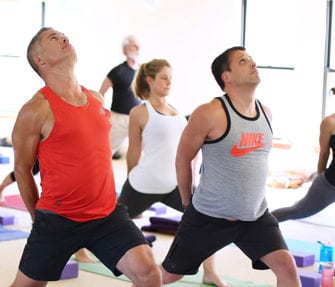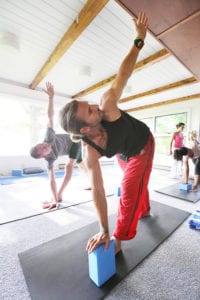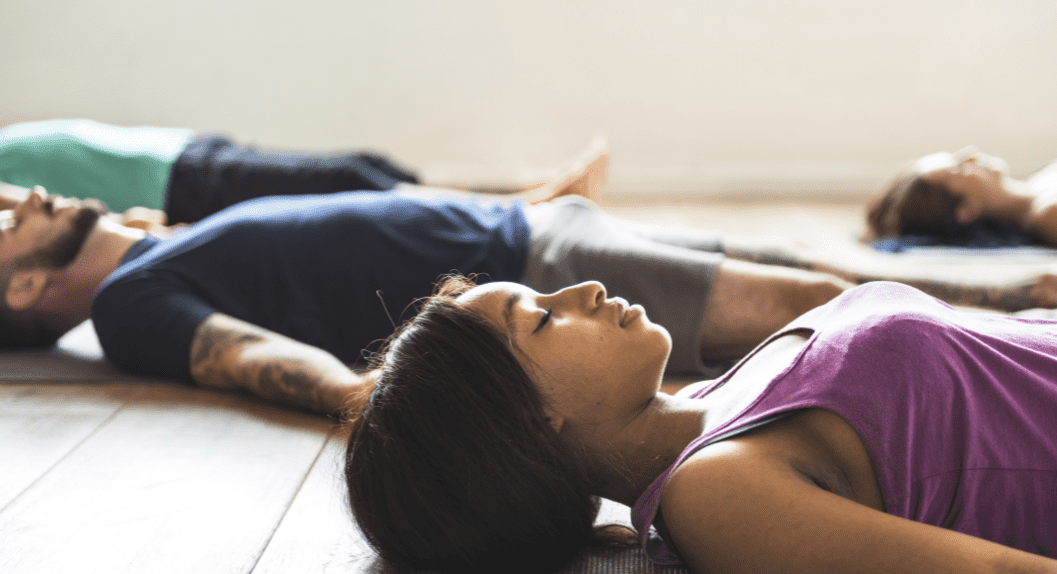In the late 1980s, the number of men to women in any Yoga class was about one out of ten, or 10 percent.
According to Mathew Solan, a former senior editor at Yoga Journal, by 2002 the number had risen to 12 percent. “It’s growing,” he said. In the latest survey undertaken by Yoga Journal, it has risen to approximately 17 percent. In other words, in the past twenty-five years men’s participation in Yoga has gone from about 1 man in every 10 people to about 1 and a half men in every 10. At that rate, there should be as many men as women in attendance at Yoga classes sometime in the next century.
A hundred years ago it would have been rare to see a woman in a class; it used to be all men all the time. Today’s Yoga is primarily Hatha Yoga, mostly exercise, with a sprinkling of breath work and mindfulness adding some variety to the mix. There is much more to Yoga than those elements, but as it’s practiced in the 21st century, Hatha rules the roost. “There is so much body consciousness in this country,” Sri Swami Satchidananda often observed.
The Roots of Yoga: A Man’s World
Classical Yoga can be traced back more than five thousand years and old-school Hatha about a thousand years. For most of that time, Yoga was a meditative or an awareness practice. Vinyasa, or posture Yoga, is primarily traced back to one Guru, Sri T. Krishnamacharya, who, in 1931, well into his 40s with a wife and children, was hired by a local prince to teach his style of Yoga at a Sanskrit college. He proclaimed an ancient birthright for postural Yoga and said that the text for it was written on a leaf thousands of years old.
A hundred years ago it would have been rare to see a woman in a class; it used to be all men all the time.

When B. K. S. Iyengar finally began teaching women, his was a modified, less aggressive form of Vinyasa, and he instructed them in separate classes. Today the tables have been turned. The only segregated classes nowadays are men’s classes, such as Broga and Yoga for Dudes.
When Yoga was first exported, in the late 19th century, it was in the person of Sri Swami Vivekananda, who promoted pranayama and positive thinking. Before and especially after World War II, though, postural Yoga began to make its way across the ocean and was wedded to physical culture and physical therapy, and particularly to the gymnastic practices popular among women of that time. “These were spiritual traditions, often developed by and for women, which used posture, breath, and relaxation to access heightened states of awareness,” wrote Mark Singleton in a 2011 Yoga Journal article entitled, “The Roots of Yoga: Ancient + Modern.”
Stretching was a key component of the regimen of the Women’s League of Health and Fitness in the 1930s and 1940s. In the 1970s, Jazzercise ruled the world of female fitness, while through the 1980s aerobics was the craze. Those fads faded, and that is when the drift toward Yoga accelerated. The rest is history. Yoga is in the mainstream and today upwards of 20 million Americans practice Hatha Yoga. Most of them are women.
Yoga in the Now
“At crowded Yoga classes rooms can be filled wall-to-wall with 60 or more students—but it’s likely that fewer of those people are men than you can count on one hand,” wrote Carolyn Gregoire in the Huffington Post. Yoga is not a man’s world anymore. It is, a recent Washington Post article pointed out, a “women’s practice.” Although the practice was created by and for men, it has been feminized. “There’s been a flip,” said Loren Fishman, director of the Manhattan Physical Medicine and Rehabilitation Clinic, in New York City. “Yoga has become a sort of gentle gym, a non-competitive, non-confrontational thing that’s good for you. Yoga has this distinctive, passive air to it.”
In less than a hundred years, Yoga has morphed from men building “better” bodies in order to build a better nation to modeling the “ideal” of the slender and taut female body paraded on the covers of innumerable Yoga magazines, Web sites, and advertisements. “The Yoga body is Gwyneth Paltrow’s body, the elongated feminine form,” noted Karlyn Crowley, director of Women’s and Gender Studies at St. Norbert College in De Pere, Wisconsin.
Why do so many women practice Yoga? Although one with any kind of body can practice Yoga in all its forms, an undeniably archetypal image is associated with a person’s being on a mat. Classes are attended mostly by women, so the classes must be for women, according to public perception. “If you ask the average person what Yoga is, they immediately think of a beautiful woman doing stretches and bends,” remarked Philip Goldberg, author of American Veda.
Who doesn’t want to be beautiful, or at least lithe and toned? Women who routinely practice Yoga have lower body mass indexes and control their weight better than those who don’t. In addition, according to a study at theUniversity of California in Berkeley, women who practiced regularly rated their body satisfaction 20 percent higher than those who took only aerobic classes—even though both groups were at the same, healthy weight.
What? No Yoga teacher Ken doll?
The reasons why women are drawn to Yoga, are varied and are related to what women seek in a workout—often a mix of aerobics training, some strength training, and mind-body practices. They are likelier to engage in group activities, like Yoga classes, than they are to hit the weights alone. “It’s because they’re interested in the social aspects of working out and because they feel more comfortable when they’re with other people,” explained Cedric Bryant, chief exercise physiologist for the American Council on Exercise.
Women are also more appropriately built for many of the poses that make up asana sequences, no matter that men designed so many of them. There is a difference, especially when it comes to the hips, between what women can do and what men should do. Yoga poses may be unisex, but there are two, very different, sexes. “Women who tie themselves in knots enjoy a lower risk of damage,” wrote William Broad in a 2012 New York Times article titled “Wounded Warrior Pose.” He continued, “Proportionally men report damage more frequently than women. Women tell mainly of minor upsets.”

So many women practice Yoga that there is even a Yoga teacher Barbie doll, complete with an outfit, mat, and mini Chihuahua, available on Amazon.com. What? No Yoga teacher Ken doll? Why do so few men practice Yoga? Part of the problem may lie in the concept of “no pain, no gain.” “If it’s flaky and too New Age, soft, and touchyfeely, that can be a turnoff to a male audience,” said Ian Mishalove of Flow Yoga Center in Washington, D.C.
No Pain, No Gain?
Even though Yoga studios today are often exercise rooms in which hard work is done on a sticky mat, it remains a mind-body practice, and that makes men hesitate. They like the body part but are uneasy with the mind part. They view fitness through the lens of physical challenge. Fathers play competitive sports and coach their sons in Pop Warner leagues. They jog faster than the other guy, gnarl mountain bikes, and pump iron. “Men work out because they like to be bigger,” observed Vincent Perez, director of Sports Therapy at Columbia University Medical Center. Men don’t mind walking into a gym lined with mirrors of themselves that will show their sweaty selves lifting weights. Walking into a studio full of women in crow, hero, and headstand poses is another matter. The sight could unnerve any man: no male wants to fail in front of 50 or 60 women.
“Most men prefer athletic activities that don’t require overt coordination,” remarked Grace De Simone of Gold’s Gym. Macho expectations are high among men when it comes to fitness. Because Yoga has nothing to do with the “no pain, no gain” school of thought, and because it’s a holistic practice, they sidestep it. When it comes to no pain, “no gain,” it may be that Yoga needs to do only one thing to attract more men, and that’s tap into the concept. “Pain gets a bad rap in our culture,” said Swami Vidyananda, who has taught Integral Yoga since 1973. “Pain has many positive functions.”
As so many men bemoan their lack of flexibility, simply ask them to do Pada Hastasana, otherwise known as touching one’s toes. That should be painful enough.



